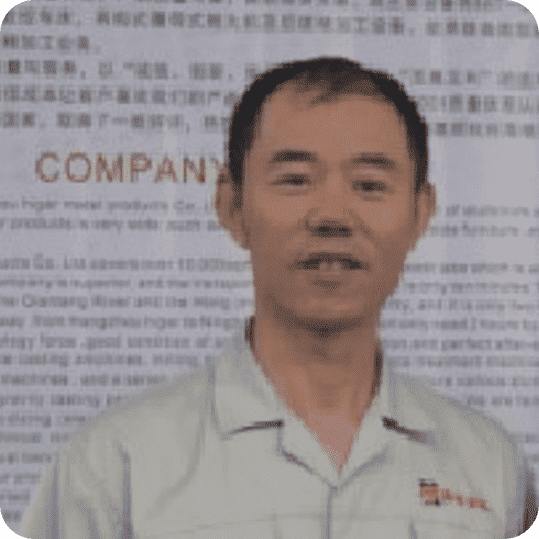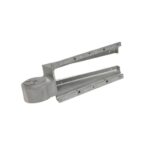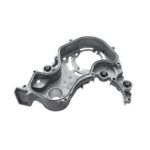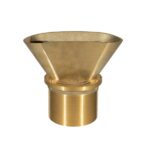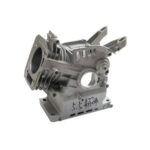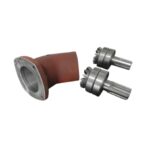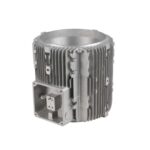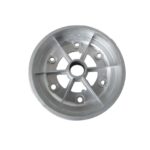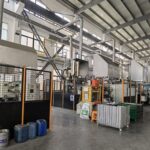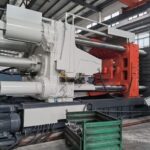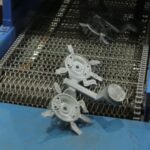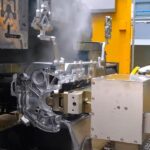In mechanical design, edges are never “just edges.” A single corner treatment can change how a part assembles, how coatings hold up, how a die-cast corner fills, and even how long a component survives under vibration or load.
Two of the most common ways to control edges are chamfers and fillets. They look simple in CAD, but the best choice depends on what you’re optimizing for: strength, manufacturability, coating durability, assembly feel, or cost.
This guide explains the real-world differences—especially for custom aluminum die-cast parts (A380/ADC12) and CNC machining after casting—and shows how to specify them clearly on drawings.
If you’re unsure, start here:
- Pick a fillet (radius) when you care about strength, stress reduction, metal flow, fatigue life, or coating durability.
- Pick a chamfer (bevel) when you care about fast edge-breaking, easy assembly lead-in, predictable clearance, or simple inspection.
| If your priority is… | Pick | Why it helps |
|---|---|---|
| Reduce stress concentration / cracking risk | Fillet | A radius spreads stress instead of focusing it at a sharp corner |
| Improve die-casting fill, reduce hot spots, improve ejection | Fillet | Rounded transitions promote flow and reduce turbulence/thermal concentration |
| Faster, cheaper edge break on machined parts | Chamfer | One tool pass is often enough; easy to inspect |
| Easier assembly / “lead-in” for pins, shafts, mating parts | Chamfer | Guides parts into position and prevents edge catching |
| Better coating durability at edges (paint/powder/anodize) | Fillet | Coatings tend to thin at sharp edges; a radius improves coverage |
| You need a crisp visual edge or defined boundary | Chamfer | Creates a controlled, consistent edge line |
| Avoid sharp edges for safety/handling | Either | Chamfer for simple edge-break; fillet for smooth touch surfaces |
What a fillet is and why engineers love it
A fillet is a rounded transition between two surfaces. On drawings it’s typically called out as a radius (R), such as R1.0. Fillets can appear on internal corners (inside radius) or external corners (edge radius).
Fillets matter because sharp corners are natural stress concentrators. Under load, vibration, or thermal cycling, cracks often start at corners where stress is highest. A fillet reduces that concentration by spreading stress through a smoother curve. That’s why fillets are common around ribs, bosses, mounting features, and high-load corners.
For aluminum die casting, fillets are not only about strength—they also help the process. Rounded transitions can promote smoother filling, reduce turbulence at intersections, and avoid abrupt thickness changes that create localized thermal issues. In other words, a fillet can improve both part performance and production stability.
What a chamfer is and why shops use it everywhere
A chamfer is a straight, angled edge cut—often used as a controlled way to remove sharp corners. Many engineers use chamfers for three practical reasons:
- Deburring and handling safety: the part won’t feel sharp or scratch operators.
- Assembly lead-in: chamfers help pins, shafts, and mating parts “find their way” without catching.
- Clearance control: a chamfer can prevent edge interference when parts slide or rotate.
On drawings, chamfers are commonly specified as C0.5 × 45° or by two legs (depending on your drafting standard). If the angle matters functionally, it’s best to state it explicitly. If the chamfer is only for edge break, keeping it simple avoids over-constraining the process.
Fillet vs chamfer: the differences that actually change outcomes
Strength and fatigue behavior
If the corner is load-bearing or sees vibration, fillets usually win.
A chamfer does reduce the “knife edge,” but the transition is still relatively abrupt compared with a smooth radius. In fatigue-sensitive parts, that difference matters. That’s why you’ll often see radii specified at rib roots, around boss bases, and anywhere stress repeatedly cycles.
Practical takeaway:
If the corner is structural, treat the fillet as a functional feature—not a cosmetic one.
Die casting reality: metal flow and corner reliability
For A380/ADC12 die castings, edge geometry influences how metal fills and solidifies. A sharp intersection can create less friendly flow behavior and can also concentrate heat during solidification. Fillets help create a smoother transition, which can support more uniform filling and reduce process sensitivity at intersections.
Chamfers can work perfectly fine in die casting too—especially for functional edges or defined clearances—but if you’re relying on a crisp cast edge for appearance or tight function, it may be more realistic to cast near-net and then CNC machine the final edge condition where needed.
Practical takeaway:
Use fillets as the default at internal transitions; use chamfers where the edge must “do something” (lead-in, clearance, inspection).
CNC machining after casting: time, tools, and cost
From a machining standpoint, chamfers are often quicker. A chamfer can be made with a chamfer tool or a simple toolpath and is easy to inspect.
Internal fillets, however, are tied to tool diameter. If you specify a very small internal radius, you force a small cutter, which usually means slower feeds, longer cycle time, and potentially more deflection. That’s why machinists often prefer larger internal radii where possible.
Practical takeaway:
If the feature will be machined, don’t specify tiny internal radii unless they are truly required.
Assembly feel and functional lead-ins
When you need a part to assemble smoothly, chamfers are the classic move. The angled edge works like a funnel: it guides mating parts into position, reduces edge catching, and improves consistency on the line.
Fillets help parts feel smooth and safe to touch, but they don’t create the same “lead-in” effect as a controlled chamfer.
Practical takeaway:
If assembly speed and reliability matter, chamfer the entry points (especially on holes, slots, and mating edges).
Coating durability and edge coverage
Edges are where finishes often fail first. Coatings can become thin on sharp edges, making them more vulnerable to chipping or corrosion exposure. A radius gives coatings a better chance to build uniformly and hold up during handling or long-term service.
If your part will be powder coated, painted, or otherwise finished, fillets/edge radii are often a safer default for durability—especially on exposed edges.
Practical takeaway:
For appearance + durability, prefer fillets on exposed edges and reserve chamfers for functional requirements.
How to choose in real projects
Choose a fillet when:
- the corner is structural or fatigue-sensitive
- you want better process stability in die casting transitions (ribs, bosses, wall intersections)
- you want improved coating behavior at exposed edges
- you want smoother touch surfaces
Choose a chamfer when:
- you need an assembly lead-in or controlled clearance
- you want quick, consistent edge break with easy inspection
- you want a crisp visual edge line
- you expect the edge to be machined anyway
A common hybrid approach in custom die-cast projects is:
cast with sensible fillets for flow + strength, then machine chamfers only where assembly or clearance demands it.
How to specify fillets and chamfers on drawings without confusion
Fillet (radius) callouts
Use radius notation such as R1.0 and clearly indicate where it applies. Avoid writing “ALL CORNERS R…” unless you truly mean it, because “all corners” can unintentionally include cosmetic edges that don’t need it and can raise cost.
Chamfer callouts
For functional chamfers, specify a size and (if important) an angle: C0.5 × 45°.
For deburring-only edges, you can use a general note like “BREAK SHARP EDGES” (based on your internal drawing standard) and then dimension only the critical chamfers.
Common mistakes that make parts harder and more expensive
One reason articles like this matter is that many “small” edge decisions create big downstream problems.
- Over-specifying tiny internal radii on CNC features increases cycle time and cost.
- Demanding sharp-looking cast edges can lead to inconsistent appearance and higher scrap risk.
- Using vague wording (“deburr as needed”) without identifying functional edges can cause assembly issues later.
- Ignoring finish behavior at edges often leads to chipping complaints—even when the coating itself is fine.
If you want predictable results, treat edge geometry as part of the design intent, not an afterthought.
FAQ
1) Is a chamfer the same as a bevel?
In many shops, yes. “Bevel” is the general term for an angled edge, while “chamfer” is the common drawing/CAD term when that bevel is a defined feature with a controlled callout.
2) Are fillets stronger than chamfers?
Usually yes—especially in fatigue or vibration environments—because a fillet reduces stress concentration more effectively than a straight break.
3) Why do internal corners almost always have fillets in CNC parts?
Because rotating cutters can’t make true sharp internal corners. The internal radius is limited by tool size, so specifying a reasonable fillet typically reduces machining time and improves accuracy.
4) When should I choose a chamfer instead?
Choose chamfers for assembly lead-ins, predictable clearances, fast deburring, and edges that must be easy to inspect. Chamfers are also common on machined features added after casting.
5) How do I specify “edge break” without dimensioning everything?
Use a general note for non-critical edges, then explicitly dimension only the edges that affect assembly, sealing, or clearance. This keeps cost under control and avoids misinterpretation.
6) For aluminum die casting, should corners always be filleted?
Not always—but fillets are a strong default at internal transitions because they support flow, strength, and reliability. Where a crisp edge is required, consider machining the edge after casting.
7) Does adding fillets increase cost?
It depends. In die casting, fillets can improve yield and stability (sometimes reducing total cost). In CNC machining, overly small internal radii can increase time and cost—so choose radii that match function.
Need a quick drawing check?
If you’re designing a custom aluminum die-cast part and you’re unsure which edges should be filleted vs chamfered, send your drawing/3D file and tell us:
- which edges are functional (assembly/clearance/sealing)
- which surfaces are cosmetic
- the finish requirement (raw, powder coat, paint, anodize, etc.)
We can recommend edge geometry that balances precision, manufacturability, and cost.

